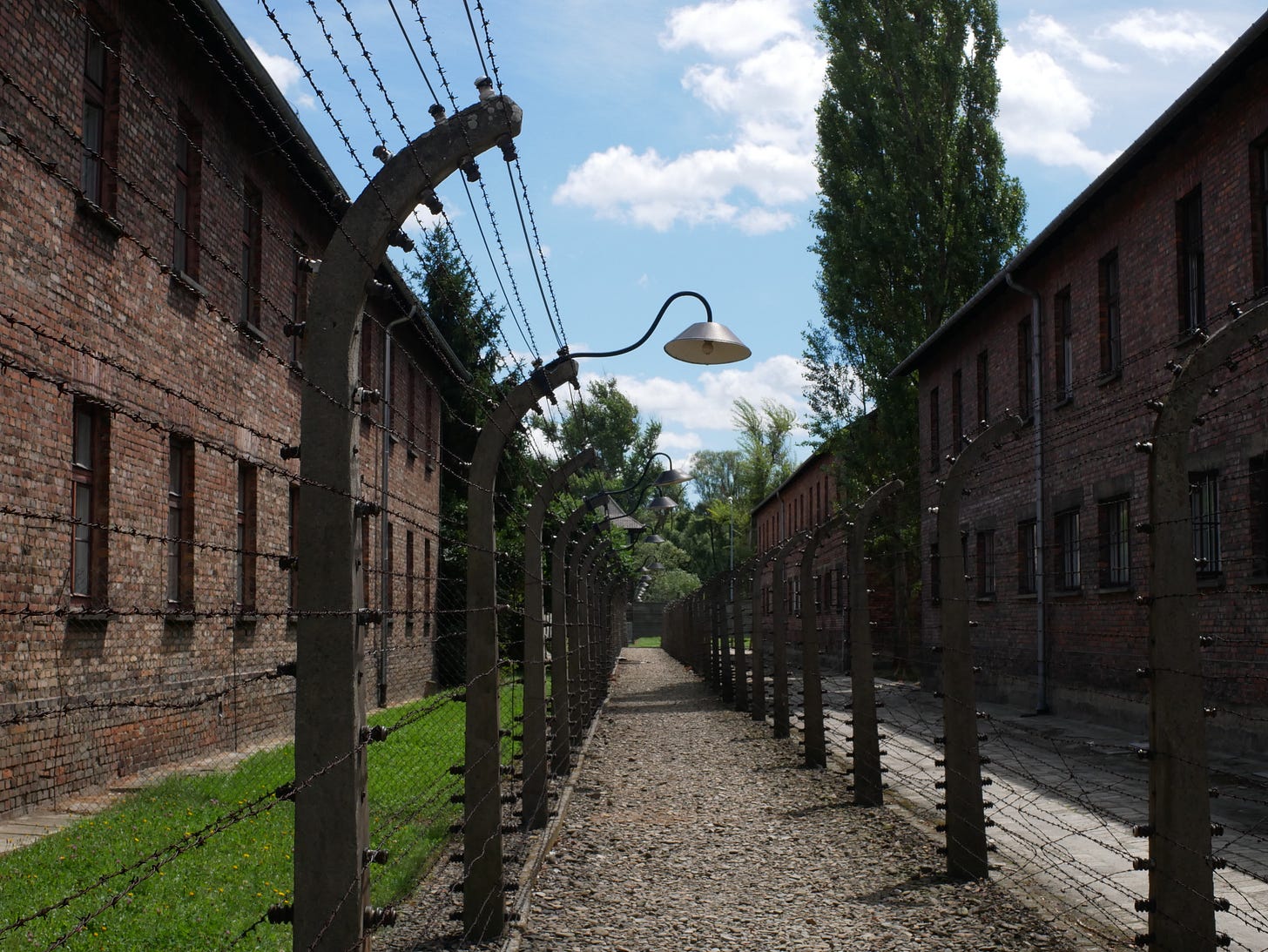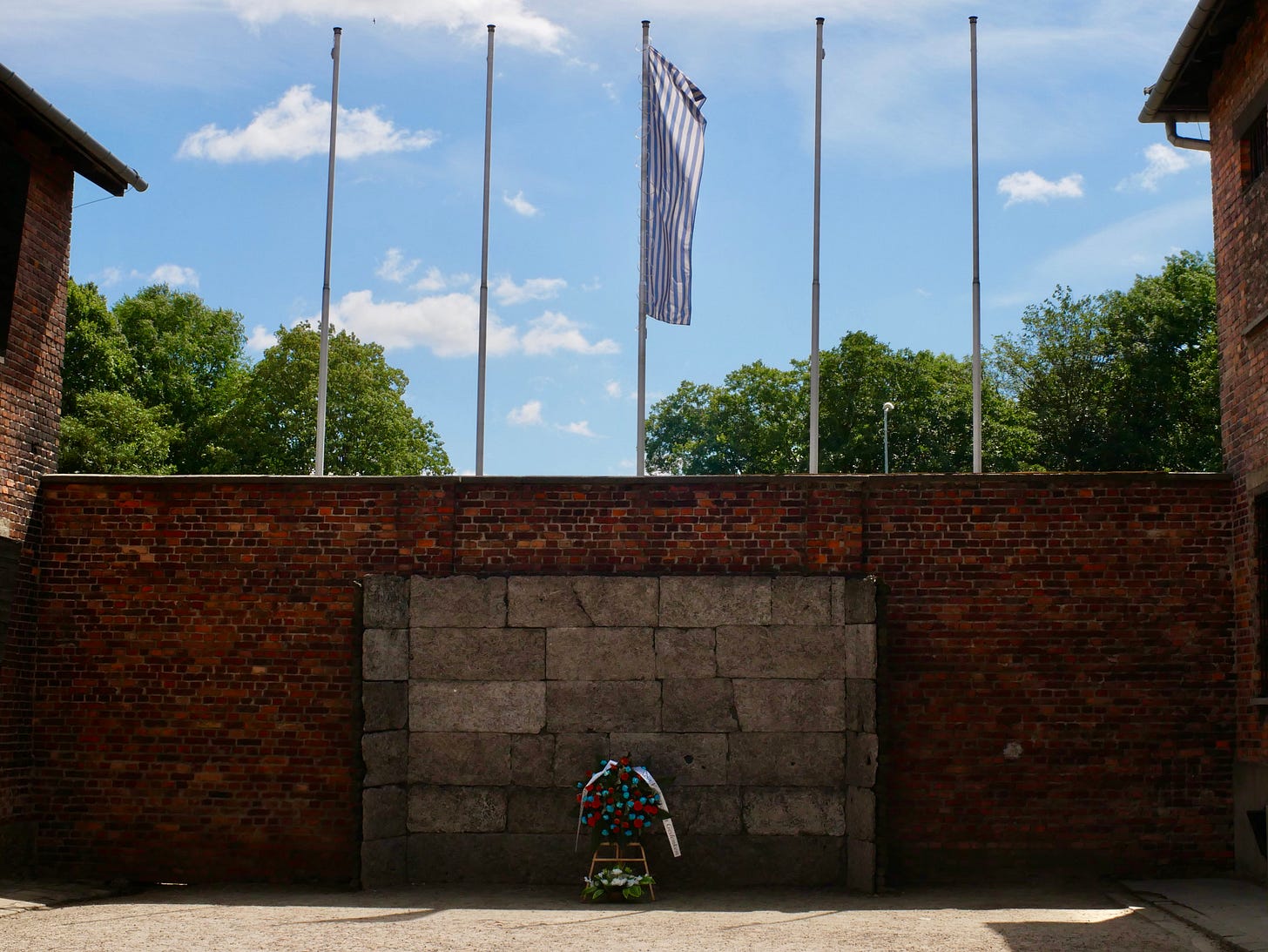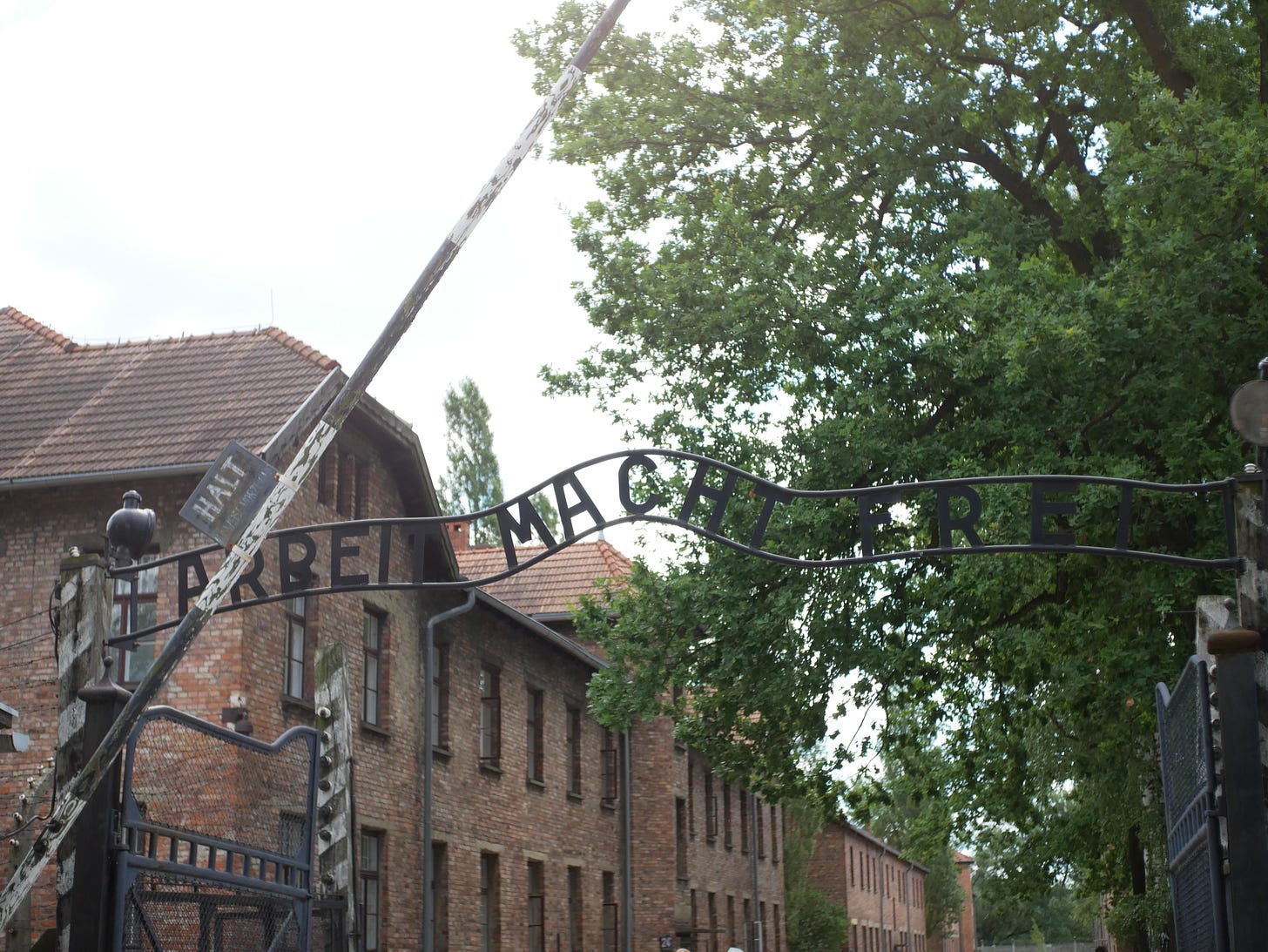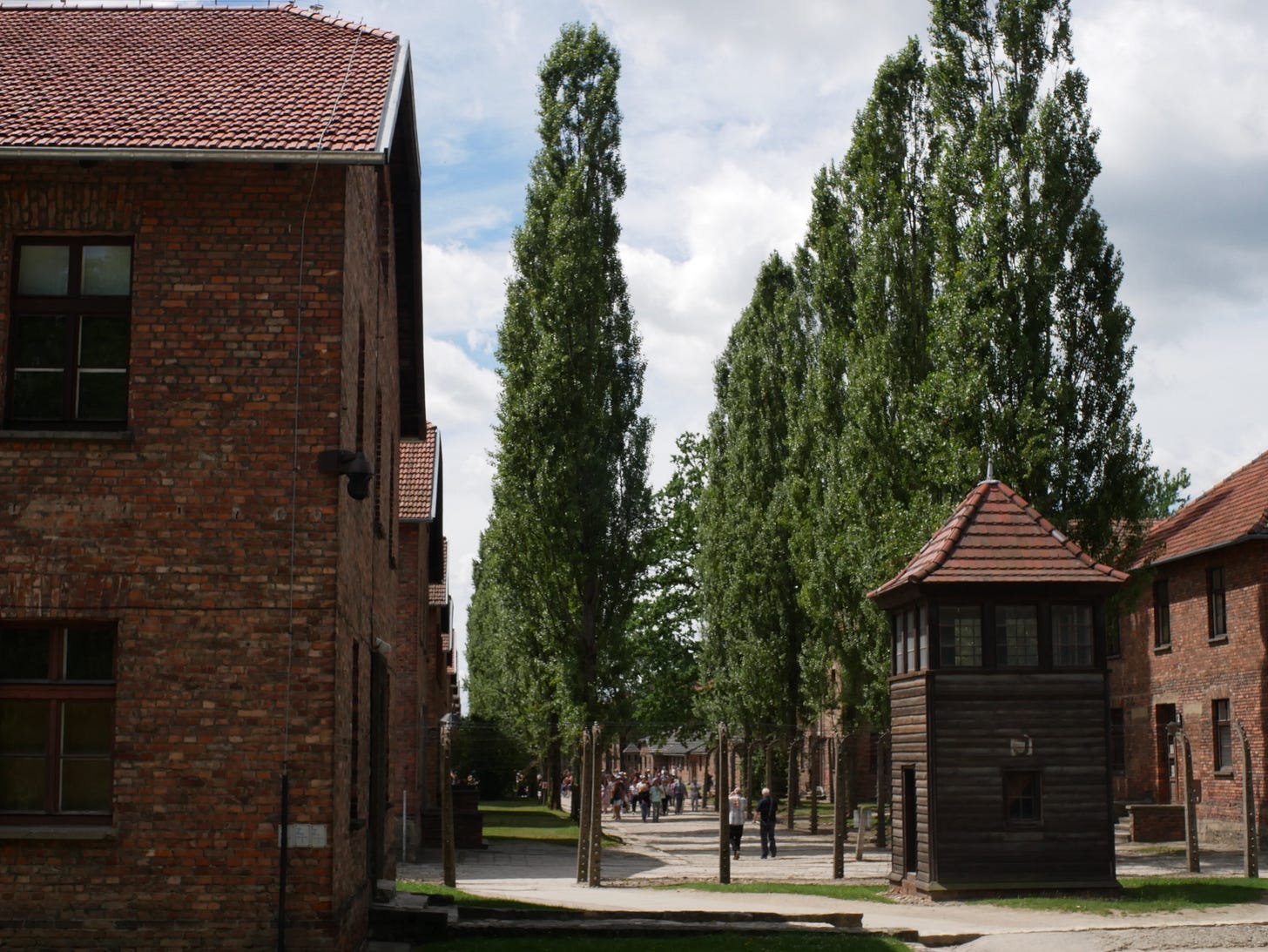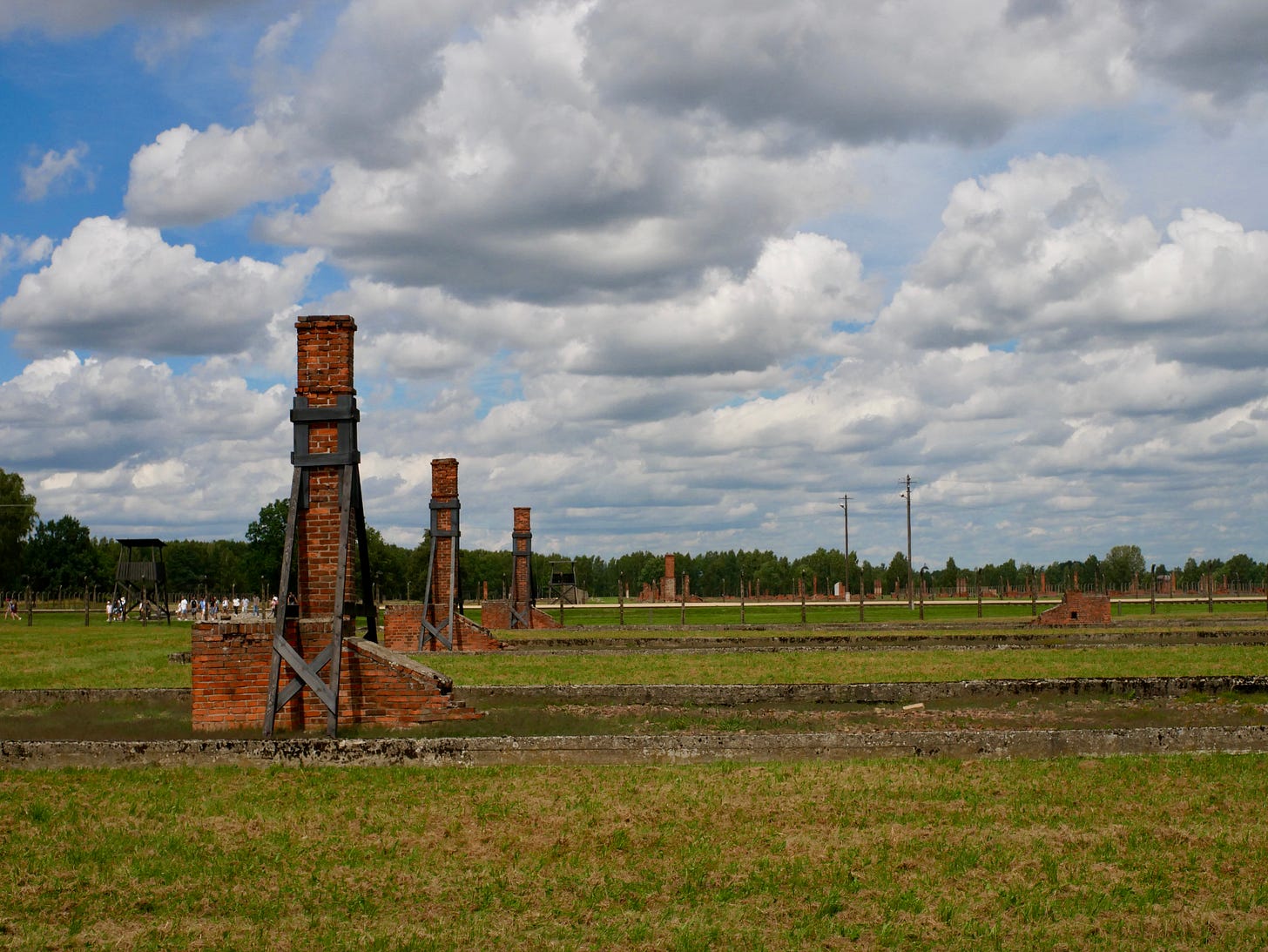Visiting a Memorial
Thoughts from the Museum and Memorial at Auschwitz-Birkenau
The other day I had the chance to visit the Auschwitz-Birkenau Memorial and Museum. When visiting Poland, especially Kraków, it’s widely regarded as an essential experience. For me, it marked the final stop in a summer-long journey through Holocaust education. Earlier this season, I visited Yad Vashem in Jerusalem, the Anne Frank House in Amsterdam, and several smaller museums and historical sites.
Before arriving, the topic kept coming up. At a pierogi-making class, some American tourists said, “It’s something you have to do.” I didn’t disagree. Auschwitz had been on my itinerary since I started planning this trip nearly a year ago. The night before the visit, I could barely sleep. I blamed it on the heat or noise or something else, but looking back, I think I was just anxious.
First, a note on logistics. While entrance to the memorial is technically free, in practice it’s nearly impossible to reserve individual tickets unless you book far in advance. Most people opt to visit as part of a guided tour. We paid around $90 for a full package that included transportation from Kraków, entry, and a guide named Grażyna. She was thoughtful and knowledgeable, and took the time to explain what we were about to see with care. She took great pride in making sure we got the best museum educator, and got a time slot that was less busy. Seeing the way it is commercialized is definitely jarring. It’s advertised on Airbnb listings, tour agencies, etc. Tours to the memorial are advertised alongside hiking trips, vodka tastings and other more typical tourist activities. Due to the amount of visitors (In 2023, over 1.67 million) I suppose it makes sense but it’s still a shock.
The visit starts at the museum, which offers historical context before you’re brought to Auschwitz I, the original concentration camp, and later to Auschwitz II-Birkenau, the much larger extermination camp. I don’t need to give a full rundown of what we saw, far more thorough and insightful accounts already exist. But I will say this: I was glad to have visited Yad Vashem beforehand. The Shoah is often incorrectly treated as a singular event, but it also serves as a painful paradigm for thinking about other national traumas. Therefore it’s important to avoid what’s been called a “competition of victimhood.”
We were fortunate to have a guide who identified as a Polish Jew. Her approach felt balanced. She honored the Jewish victims of Auschwitz without erasing the suffering of others. According to both the museum’s website and our tour guide:
Approximately 1.1 million people were murdered at Auschwitz between 1940 and 1945. Around 1 million of them were Jews. The next largest groups were Poles (around 70,000) and Roma and Sinti (about 21,000).
Two moments especially made my stomach drop: seeing the preserved collection of human hair, and walking through one of the remaining gas chambers. No photos there.
At Auschwitz II-Birkenau, I was overwhelmed by the sheer scale of it. You truly can’t imagine how vast it is until you’re there. Earlier that day, our Airbnb tour guide had given us a short drive around the perimeter. But walking it on foot gave me chills, even in the summer heat. It was quiet. It felt almost wrong to look up at the clear blue sky, such a beautiful day in a place where such evil had occurred in broad daylight.
The tour ended inside one of the prisoners' barracks. In that dark stuffy room, our guide offered a final reflection on the mission of the museum and what it means to preserve a place like this. That’s when it finally caught up with me and I sobbed. The whole day had been heavy, but there in the stillness I found some relief.
The museum staff explained that preserving the site is an immense and ongoing challenge. There are no reenactments or reconstructions; instead, they focus on what they call “invisible repairs. Painstaking efforts to stabilize the structures while keeping them as close to their original condition as possible. It’s more labor-intensive and more expensive than reconstructing.
I’ve heard people complain about a lack of respect from other visitors, but our group and the groups around us were appropriate. No smiling selfies, no loud talking, etc.
One takeaway from the seminar at Yad Vashem that stuck with me:
Memory exists on multiple levels: individual, social, political, cultural. And that the act of remembering, especially something as painful as the Shoah, is meant to foster solidarity.
I felt that solidarity with the others during my time at the memorial. There’s no way to know for sure just by looking but I’d wager that most of the visitors there that day weren’t Jewish. And yet, they came. They listened. They bore witness.
More soon.



